|
Study after study has shown that NFL teams have little ability to draft the right players after accounting for where those picks take place. Even the best general managers have a rough time landing on the correct selections every year. Eagles GM Howie Roseman drafted Jalen Reagor just before Justin Jefferson in 2020. In the same draft, Chiefs GM Brett Veach picked Clyde Edwards-Helaire immediately before Tee Higgins, Michael Pittman Jr. and D'Andre Swift came off the board. In 2017, 49ers GM John Lynch took Solomon Thomas (and otherwise was going to draft Reuben Foster) when Christian McCaffrey and Patrick Mahomes were still available in the top 10. You get the idea. It's hard. The one thing executives can control, though, is how they maneuver around the draft board. We know it's generally optimal to trade down and amass extra picks, but the best GMs have a knack for timing a move up the board, too. Veach collected a haul when he traded Tyreek Hill to the Dolphins in 2022, and the Chiefs used one of those picks and moved back up in Round 1 of the draft to take cornerback Trent McDuffie, who has played a key role in winning back-to-back Super Bowls. Oh, and Veach's predecessor, John Dorsey, moved up in the 2017 draft to jump ahead of the Saints for Mahomes. That move worked out pretty well. Subscribe: "The Bill Barnwell Show" Let's run through the 32 picks in the first round of the 2024 draft and identify what each team should do with its selection. Should it be more inclined to trade down? Move up? Or should it stand its ground and stay put? I'll mention when a general manager has a history of making moves in one direction or another, but this isn't about predicting what will happen later this month in Detroit. It's my preference after looking at post-free agency rosters, who each is likely to pursue in the draft and what's lurking around every team on the board. We'll start with the top of the board, where there likely won't be any surprise or suspense in what the Bears should do: Jump to an interesting pick:
NE at No. 3 | NYG at No. 6
CHI at No. 9 | MIN at No. 11
DEN at No. 12 | LAR at No. 19
MIN at No. 23 | BUF at No. 28  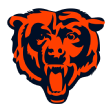 1. Chicago Bears (via CAR)What they should do: Stay put. Well, the Bears can't trade up any further, so this is going to be a relatively short start to the column. There hasn't been much chatter about them being open for business and willing to trade down. While there has been plenty of speculation that Jayden Daniels (LSU) might jump ahead of Drake Maye (North Carolina) and be the quarterback who comes off the board at No. 2, Caleb Williams (USC) seems to have firmly ensconced himself atop the league's consensus draft board. If the Bears were having serious thoughts about trading down, there would be a lot more smoke surrounding what they're going to do by now.
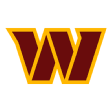 2. Washington Commanders
What they should do: Stay put. In the big picture, I could see an argument for the Commanders trading down. This is the same ownership group that oversaw the "Trust the Process" Sixers, a team that stripped its roster to the bare bones to get as many draft picks as possible before building back up with multiple top-five selections. Some of those picks turned into Ben Simmons and Markelle Fultz, which wasn't an ideal ending, but it's not out of the question that Washington could have decided to go deep into the tank. Trading this pick would undoubtedly net the franchise multiple first-rounders in the years to come, possibly from a team that might still be far away from contending, like the Raiders or Broncos. That's a tantalizing option. I'm not sure tanking is as effective of a solution in the NFL, though, and the value of high draft picks in football fluctuates much more significantly than it does in basketball. Every sport is subject to differing qualities in draft classes from year to year, but nothing is more valuable than being in position to pick a potential franchise quarterback. The Commanders would project to generate more surplus value by drafting a quarterback at No. 2 than they would by landing two other picks in the top 10 and using them on non-quarterbacks. The Commanders have also been relatively active in free agency in terms of trying to build a culture, signing linebacker Bobby Wagner, center Tyler Biadasz and edge rusher Dorance Armstrong. They don't look like a team that plans to lose in 2024. If they don't love any of the non-Williams quarterbacks available at No. 2, they could consider a trade down. Otherwise, they need to stay put and draft a signal-caller.
 3. New England PatriotsWhat they should do: Stay put. I swear, there are going to be some recommendations for teams to trade up or down in this column, but this is a unique beginning to the draft. The Patriots find themselves with a more complicated version of the problem the Commanders face. New Washington general manager Adam Peters can go to bed at night knowing he'll have his pick of the non-Williams quarterbacks at No. 2 (or, if the totally unexpected happens, he can simply take Williams). The Patriots don't know whether Daniels or Maye will still be on the board for them at No. 3, and that uncertainty creates some trade possibilities. If they don't love Maye or J.J. McCarthy (Michigan), they would be better off trading down and adding one of the lesser-tier quarterbacks while racking up significant draft capital from a team wanting to move up. It's entirely possible they could have a trade lined up with the Vikings or Raiders if New England scouting director Eliot Wolf's quarterback of choice is off the board by the time the clock starts. On the other hand, if the Patriots feel confident about three (or more) quarterbacks -- or if the passer they want slips past the Bears and Commanders to No. 3 -- they have to stay put and take that quarterback. My colleague Matt Miller has made the argument the Patriots should wait on taking their quarterback because they don't have the infrastructure to support that rookie, and I can certainly see his point given what the Pats have at left tackle and wide receiver. Still, there is no guarantee they will be in position to take a quarterback again across the next few drafts. If the Pats like one of these passers and he is available at No. 3, they have to go for it.
 4. Arizona CardinalsWhat they should do: Trade down. This is the most obvious trade-down spot in Round 1 in terms of projected value. Most mock drafts have the Cardinals staying put and filling a huge need by drafting wide receiver Marvin Harrison Jr. (Ohio State), and I could certainly understand that move. Harrison might be the next Larry Fitzgerald, and taking Fitzgerald at No. 3 in 2004 worked out pretty well for the Cardinals in the long run. Treating a top-five wide receiver as a lock to become the next Fitzgerald is a dangerous game, though. The other wideouts taken in the top five since 2000 include Calvin Johnson and Ja'Marr Chase, but there's also Peter Warrick, Charles Rogers, Justin Blackmon and Sammy Watkins, who weren't able to convert their college dominance to pro success. In a wide receiver class widely regarded as the deepest in recent memory, Arizona doesn't need to take a wideout here to find playmakers for Kyler Murray. The bigger reason to pass on Harrison and trade down would be the positioning the Cardinals offer to teams that might want to move up for McCarthy (or whichever quarterback is still on the board at No. 4). The only way for the Vikings or Raiders to ensure landing QB4 is to trade up to here. Jumping from the teens to No. 4 should net the Cardinals another first-round pick and something more in return, allowing a team with holes on both sides of the ball to supplement multiple spots on their roster. Like they did a year ago for offensive tackle Paris Johnson Jr., the Cardinals could trade back up into the bottom half of the top 10 if they really wanted to add Malik Nabers (LSU) or Rome Odunze (Washington), who are considered the next-best receivers.
 5. Los Angeles ChargersWhat they should do: Trade down. This roster has been battered by subpar drafting and decision-making in recent years. The Chargers have seen first-round picks (linebacker Kenneth Murray, wide receiver Quentin Johnston) and free agent additions (cornerback JC Jackson, linebacker Eric Kendricks) fail to live up to expectations, leaving a cap bind that led to the departures of top wideouts Keenan Allen and Mike Williams. Ten of the 22 players who started for L.A. in the playoff loss to the Jaguars in January 2023 are no longer on the roster, a group which doesn't include Williams (who was injured in a meaningless Week 18 game and inactive for the defeat) and center Corey Linsley (who is likely to retire after June 1 because of a heart condition). The Chargers were much better than their record a year ago, and new coach Jim Harbaugh turned around the 49ers in a flash after taking over in 2010, but L.A. needs to be thoughtful about how it approaches its roster with Justin Herbert making elite quarterback money over the next few years. With holes at wide receiver, tackle and cornerback, new general manager Joe Hortiz would be wise to do something his predecessor, Tom Telesco, failed to do once in 11 seasons as GM: Trade down.
 6. New York GiantsWhat they should do: Trade down. Or stay put. Or trade up. Like the Cardinals, the Giants are both in need of a No. 1 wide receiver and squarely in the quarterback trade splash zone, which makes their predicament difficult. A lot depends on what happens above them at Nos. 4 and 5. If the Cardinals and Chargers both stay put and take wide receivers, the Giants would be drafting the third-best wideout in the class and also be in position to benefit from those teams that want the QB4. In that scenario, New York would be staring down the opportunity to land multiple first-rounders to pass on a receiver such as Odunze. In a class this deep, that's a risk it needs to be willing to take. On the other hand, if McCarthy comes off the board before this pick and there aren't great trade offers from teams trying to move up, the Giants would still be in position to draft Nabers (or Odunze, if they prefer him as a prospect) without needing to budge off their spot. In that scenario, they should probably stay put and take their pass-catcher. There's also one more scenario: What if the Giants want McCarthy or Maye or Daniels for themselves? Daniel Jones suffered his second neck injury in 2023 even before tearing the ACL in his right knee, and he has only $11 million fully guaranteed remaining on his deal after 2024. (It's entirely possible the Giants shut him down at some point during 2024 to avoid having the rest of his 2025 salary that is guaranteed for injury trigger, as the Raiders did with Derek Carr and the Broncos did with Russell Wilson.) If they want McCarthy, they probably need to talk with the Cardinals at No. 4; Arizona could move down two spots and still ensure it would be in position to land either Harrison or Nabors, while New York would beat everyone else to the punch for its quarterback of the future.
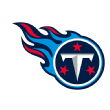 7. Tennessee TitansWhat they should do: Trade up. While Ran Carthon has made plenty of moves this offseason, the one position he conspicuously has not touched is offensive tackle. The Titans let Chris Hubbard hit free agency and cut free agent disaster Andre Dillard after one season, leaving them without many options at the position. Saahdiq Charles played outside during his time in Washington with little success, while Nicholas Petit-Frere missed most of 2023 between a gambling suspension and a shoulder injury. Dillon Radunz hasn't looked like an NFL-caliber offensive lineman. Peter Skoronski, a first-round pick last year, played tackle at Northwestern, but I'm not sure he showed enough at guard last season to make Tennessee feel confident about bumping him outside. Even if Skoronski or Radunz start at one tackle spot, the Titans need to add another lineman to the mix. They've been popularly linked to Joe Alt (Notre Dame) at No. 7, but the Chargers could add a right tackle at No. 5. Harbaugh already has highlighted the value of a strong offensive line in talking to the media. That could just be a coach platitude -- everyone thinks having a strong offensive line is a good idea -- but it could also hint toward what the Chargers are thinking. If the Titans want to ensure they land their tackle of choice, they probably need to give the Cardinals a call.
 8. Atlanta FalconsWhat they should do: Trade down (but not too far). Unlike seemingly every other team in the top 10, the Falcons aren't in the market for a quarterback, wide receiver or offensive lineman. If they stay put, there's a good chance they will be the first team to take a defensive player. That's not a bad place to stand. Go back to 2021, when the first seven picks off the board were offensive players. The Panthers took cornerback Jaycee Horn at No. 8. The next pick was corner Pat Surtain. Three picks later, the Cowboys made the third defensive selection of the draft and took linebacker Micah Parsons. Those are two transcendent players, and if Horn could stay healthy, he would get mentioned alongside Surtain and Sauce Gardner as one of the league's best young cornerbacks. Zigging when everyone is zagging isn't the worst idea, but in a draft in which there isn't a consensus No. 1 pass-rusher, the Falcons could move down a couple of spots and still have a decent shot of landing Dallas Turner (Alabama) or Laiatu Latu (UCLA). If we assume there are four quarterbacks, two wide receivers and one tackle off the board before this pick, this would be a spot in which a team could trade up for the WR3 or move ahead of the Bears (No. 9) and Jets (No. 10) for the second-best tackle in the class.
 9. Chicago BearsWhat they should do: Trade down. After seeing what the Texans did in Round 1 with quarterback C.J. Stroud and pass-rusher Will Anderson last year, it might be tempting for the Bears to make a dramatic swoop by landing a quarterback at No. 1 before moving up to land a second potential superstar in the top five. The idea of Williams throwing to Harrison, Keenan Allen and DJ Moore does sound pretty incredible, although it would come at the expense of several other needs on Chicago's roster. While the Bears landed extra draft capital by trading down with the Panthers a year ago, they've also sacrificed second-round picks in consecutive years by dealing for Chase Claypool and Montez Sweat. There isn't much left in the cupboard from the Ryan Pace era, where the only Day 1 or Day 2 picks still on the roster are tight end Cole Kmet and cornerback Jaylon Johnson. With needs at offensive tackle and defensive lineman and more depth required throughout the roster, this would be a good spot to consider trading down in the hopes of adding more top-100 picks around their rookie quarterback.
 10. New York JetsWhat they should do: Trade up. The Jets are all-in around 40-year-old quarterback Aaron Rodgers, who might retire as early as next offseason. They should want to add the best available player who can impact the 2024 team, and the players most likely to make that immediate impact are at the top of the class. General manager Joe Douglas addressed wide receiver (Mike Williams) and tackle (Tyron Smith and Morgan Moses), but Williams and Smith both have significant injury histories. If the Jets traded up for Alt, for example, they could install him at right tackle and have Moses in the swing tackle role, where he would be valuable depth for a team that started 13 different offensive linemen a year ago. A move for Nabers or Odunze would give Williams time to recover from his torn left ACL and build a dynamic one-two punch with Garrett Wilson, which would make life easier for the guy who ends up replacing Rodgers, too. The fact the Jets kept their 2025 second-rounder and instead traded a 2026 pick to the Eagles for edge rusher Haason Reddick makes me think they're considering using that 2025 selection to help move up this year.
 11. Minnesota VikingsWhat they should do: Trade up. I wouldn't be surprised if the Vikings have some semblance of a trade up the board already in place. It's the only thing that makes sense after they acquired the No. 23 pick from the Texans without then immediately packaging that selection in a second deal to move into the top six. That deal might be dependent upon a scenario in which a player is (or is not) available. As an example, the Vikings might have a deal in place with the Chargers where they'll move up to No. 5, as long as McCarthy is still available and Harrison is off the board. They might have tentative agreements with more than one team. While the Saints added an extra first-round pick in 2022 and then didn't use that selection to draft a quarterback, it still seems fair to look at the Minnesota roster and expect it to be in the market for a passer in this draft. I'll get to an alternate scenario for the Vikings at No. 23, but for now, let's plug them in as sending Nos. 11 and 23 to get as far up the board as possible.
 12. Denver BroncosWhat they should do: Trade down. Last year, Sean Payton took over a team bereft of draft capital, with the Broncos having traded two first-round picks and two second-round picks for quarterback Russell Wilson before sending first- and second-round picks to the Saints to acquire Payton himself. With no picks in the first two rounds and just one top-100 pick, the logical thing for Denver to do was trade down and acquire more selections. At the very least, holding onto those picks and attempting to stockpile cost-controlled talent seemed like a must. Instead, Payton and general manager George Paton traded up into the second round to take wideout Marvin Mims and then back into the third round for defensive back Riley Moss. The Broncos still have one more pick swap in 2024 from the Payton deal, as they sent their second-rounder to the Saints for a third-rounder, but that pick is now going to Seahawks as part of the Moss deal. Their fourth-rounder went to the Jets in a 2022 trade for defensive end Jake Martin, who played five games with the team. The Broncos have an extra fourth-round pick and three fifth-round selections, but you get the idea: This team needs more draft capital. Note that this piece is arguing for what teams should do as opposed to what they will end up doing. Given where their roster sits after Denver chose the nuclear option with Wilson's contract, Payton & Co. should be taking a conservative approach and attempting to refill the cupboard with players on rookie deals. In reality, I would be surprised if they resisted the urge to get aggressive during draft weekend.
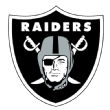 13. Las Vegas RaidersWhat they should do: Trade down. I try to be the voice of reason with the Raiders, but it's usually for naught until it's too late. They aren't as close to contending as they seem to believe. This team was the league's 11th-oldest a year ago, in huge part because it got virtually nothing out of the top-100 picks it made during the Jon Gruden and Josh McDaniels eras. Some of those veterans have gone out the door this offseason, but the reason defensive tackle Bilal Nichols, guard Greg Van Roten and cornerback Marcus Peters were in starting roles for most of last season was because the guys the Raiders originally expected to fill those roles from their drafts either didn't pan out or weren't good enough to play. While the Raiders need an upgrade on Aidan O'Connell at quarterback, they're also not a quarterback away from competing with the Chiefs. (Yes, they beat the Chiefs in December, but if you're counting on getting two defensive touchdowns on consecutive plays to beat Patrick Mahomes every time out, that's not going to go well.) Las Vegas also needs long-term answers along the offensive line, in the secondary and at running back. That's why it's the perfect team to take a swing on a quarterback such as Michael Penix Jr. (Washington) early in Round 2 after moving down to add extra picks in Round 1. Given that the Raiders' general manager is now Tom Telesco and I just mentioned he never traded down once during his time with the Chargers, well, I wouldn't count on Vegas moving down in reality.
 14. New Orleans SaintsWhat they should do: Trade up. Finally, my advice coincides with a team's history! General manager Mickey Loomis hasn't traded down in a draft since 2007, when he let the Lions move up in the second round for the immortal Ikaika Alama-Francis, who was gone after two years in Detroit. The Saints have turned players into extra draft capital, as they did during their legendary 2017 draft, when they landed offensive tackle Ryan Ramczyk and edge rusher Trey Hendrickson with the picks they got from New England for wideout Brandin Cooks. In terms of moving down, though? It's not a thing New Orleans has done. General managers can change their stripes, as Dave Gettleman did in his final draft with the Giants, but this is a position in which the Saints probably need to be more aggressive. They have a crisis brewing at tackle, where 2022 first-rounder Trevor Penning was benched halfway through his sophomore season. Andrus Peat, who filled in for Penning, is a free agent. Ramczyk's future in the NFL is uncertain as he battles a knee injury. With the Saints continuing to mash the all-in button given their cap situation and the presence of a 33-year-old Derek Carr under center, they need to come away from the draft with two new offensive linemen. The problem is there are plenty of tackle-needy teams ahead of them in the draft: The Chargers, Titans, Bears and Jets could all be in the market for an offensive tackle. The most logical place for them to land would be at No. 8, but would the Falcons really be so kind as to help out their archrivals in a deal?
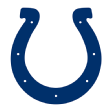 15. Indianapolis ColtsWhat they should do: Trade down. Most mock drafts have the Colts projected to add defensive help, either up front or at cornerback. While the top of Round 1 is almost all offensive players, the middle is more uncertain. The Seahawks, Jaguars, Bengals and Rams all have needs on both sides of the ball and could go in either direction, which would leave Indy in an uncertain position. GM Chris Ballard typically has preferred to trade down and amass picks in the first two rounds, most notably when he picked up three second-round picks as part of the Sam Darnold trade with the Jets ahead of the 2018 draft. This also hasn't been a team that values cornerback as a premium position, so going after one in Round 2 seems more likely than targeting one in the top 15.
 16. Seattle SeahawksWhat they should do: Trade down. After years of trading down, longtime Seattle GM John Schneider might want to consider getting back into the act. He traded down 14 times in the first two rounds of drafts between 2010 and 2019, but he has stayed put in each of the four subsequent drafts. He now has full personnel control after Pete Carroll's departure, so we'll see if there are changes to the Seahawks' drafting philosophy now that Mike Macdonald has taken over as coach. You could make a case the most prominent weakness on this roster is at guard, but I'm not sure that's a position Seattle will want to address in Round 1. With Schneider down his second-round pick from the Leonard Williams trade and his third-rounder as part of the Sam Howell deal, moving down to add extra Day 2 selections is both an on-brand move and a logical use of the organization's remaining resources.
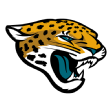 17. Jacksonville JaguarsWhat they should do: Trade up. After losing out on Calvin Ridley in free agency, the Jaguars need to evaluate their long-term vision at receiver, where the depth chart is almost all imported free agents: Gabe Davis, Evan Engram, Christian Kirk and Zay Jones. That philosophy made sense when quarterback Trevor Lawrence was on a rookie deal, but with Lawrence now eligible for a massive extension and a raise of about $45 million per season on his current deal, the Jags are going to need to get more creative in surrounding him with talent. Would trying to move up for one of the top three receivers in this class make sense? That likely would require getting into the top 10. The teams directly ahead of them don't have obvious needs at wide receiver, but if Odunze falls to No. 9, Jacksonville might be able to justify a deal with Chicago to land a cost-controlled top wideout for the next four seasons. Of course, the Bears might prefer to keep Odunze for themselves.
 18. Cincinnati BengalsWhat they should do: Trade down. While the Bengals have paid quarterback Joe Burrow and a handful of key players around him, they still have to address the contracts of wide receivers Tee Higgins and Ja'Marr Chase in the next 12 months. Higgins will play on the franchise tag in 2024, while Chase is now eligible for an extension. There's not as much depth on this roster as there was during the run to the Super Bowl in 2021, and some of the replacements they pursued to replace departed veterans -- such as safety Jessie Bates -- didn't live up to expectations last season. With Higgins on a one-year deal, Cincinnati might want to take advantage of a deep wide receiver draft to move down and add a wideout who can serve as the third receiver in 2024 before taking over as a replacement for Higgins in 2025. Adding an extra pick would also make it easier to address the interior of the offensive line, which is the sort of position the Bengals typically would want to hit on Day 2 as opposed to the top 32 picks.
 19. Los Angeles RamsWhat they should do: Trade down. It's unclear whether the Rams will even remember to show up for the opening day of the draft, given that GM Les Snead & Co. haven't made a Round 1 pick since selecting quarterback Jared Goff with the No. 1 overall selection in 2016. It's entirely possible they flip this pick for a talented young player on a rookie deal, although the obvious fits were at cornerback (Jaycee Horn or Pat Surtain), and they instead went out and signed free agents Tre'Davious White and Darious Williams. Assuming the Rams don't trade this pick for a player, this is an organization that has repeatedly exhibited an attitude that first-round picks are overrated, especially when they're not in the upper half of the draft. I wouldn't be surprised if they were on the phone with teams such as the Panthers and Commanders, each of whom have two picks high in the second round, in the hopes that those teams want to jump the Steelers in grabbing help for their young quarterbacks. Unless L.A. has an Aaron Donald replacement it loves in this spot -- Mel Kiper Jr.'s most recent mock had the team taking 3-technique tackle Byron Murphy II (Texas) -- trading down and continuing to add cost-controlled players makes sense.
 20. Pittsburgh SteelersWhat they should do: Trade down. The Steelers are perilously thin at cornerback, wide receiver and along the offensive line. They fielded the oldest defense in football last season, and while they moved on from corner Patrick Peterson, there are five starters on that side of the ball who will be on the wrong side of 30 by the end of the season. Pittsburgh is still great at drafting and developing homegrown defensive talent, as we saw with defensive tackle Keeanu Benton and corner Joey Porter Jr. last year; they just need more of it. The other position the Steelers are predicted to address most often in mock drafts is the interior of their offensive line, where center Mason Cole was released this offseason. They can hit center later in this draft, and adding extra picks would allow them to both add a pivot and much-needed defensive depth.
 21. Miami DolphinsWhat they should do: Trade down. Opposing teams have spent more than $184 million in free agency on guaranteed deals for players who were on the Dolphins last season. That's more than the league has spent on any other team's players this offseason, which underlines just how much Miami has lost from its roster. It also has to consider contract extensions for safety Jevon Holland, edge rusher Jaelan Phillips, quarterback Tua Tagovailoa and wideout Jaylen Waddle this offseason, so this team isn't about to get any cheaper. It's tempting to try to move ahead of the Colts for a cornerback or the Seahawks for offensive line help, but the Dolphins need to start stacking up some cost-controlled talent to support what is becoming an extremely expensive core. They are also down their third-round pick from the tampering case from 2022 and their fourth-rounder from the trade for pass-rusher Bradley Chubb from the same year, so they could use the added picks.
 22. Philadelphia EaglesWhat they should do: Trade up. GM Howie Roseman generally takes the longer view with his draft capital, but he's often willing to move up a pick or two to get ahead of the teams around him to add a player. He has gone to this tactic to land offensive tackle Andre Dillard (2019), DeVonta Smith (2021), Jordan Davis (2022) and Jalen Carter (2023) in Round 1 of recent drafts. This year's trade could be a slight move ahead of the Dolphins for a cornerback, given that James Bradberry and Darius Slay are both in their 30s and could be cap casualties next offseason. Roseman was able to re-sign Avonte Maddox, and C.J. Gardner-Johnson could move back into the slot if necessary, but if you watched the Philadelphia defense in the second half of last season, you know teams can never have too many competent defensive backs on their roster.
 23. Minnesota Vikings (via HOU through CLE)What they should do: Trade up. If the Vikings were going to trade up from No. 11 for a quarterback, they're probably going to be sending No. 23 as part of the deal. The move to sacrifice capital in the form of second-round picks to even get this pick from the Texans only really makes sense if it's part of a specific package for a move up. Let's consider an alternate scenario. What if the Vikings land McCarthy at No. 11 without needing to trade up? That would seem like a surprise given that he is going as high as No. 2 in some mock drafts, but it would hardly be unprecedented. Mac Jones was rumored to be going somewhere in the top five in 2021 before falling to the Patriots at No. 15. Aaron Rodgers was in the mix for the top spot in the 2004 draft and then fell all the way to the Packers at No. 24. I'd be surprised if McCarthy was still on the board at No. 11, but it's certainly a possibility. If that happens, I would expect the Vikings to stay put at No. 23. Trading down and trying to recoup some of the capital they lost would make the most sense, but it's difficult to believe they would land as much in a draft-day trade down as they gave up when they acquired the pick from Houston. That would be at least a little embarrassing for the front office, leading me to believe they would hold on to the pick.
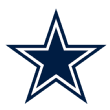 24. Dallas CowboysWhat they should do: Stay put. After a remarkably quiet offseason, Cowboys fans might be hoping for a significant trade up in this draft to make a splashy move for a notable player. We can never rule anything out with Jerry Jones & Co., but I'm not sure that sort of move is in the cards. The organization has to pay wideout CeeDee Lamb and pass-rusher Micah Parsons on deals that should reset the markets at their respective positions, contracts that should combine to top $65 million per season in average value. They also have to work out their future at quarterback, given that Dak Prescott is both due for a raise and can't be franchise-tagged ahead of free agency in 2025. Could this be a place where they draft a passer such as Penix or Bo Nix (Oregon)? Maybe. The Cowboys probably need to address their offensive line, and while they could trade down, this would be a spot in which they could pursue an immediate starter at left tackle while leaving Tyler Smith at left guard. In his most recent mock draft, Field Yates has the 49ers trading up to grab Amarius Mims (Georgia) here, while the Cowboys take another tackle at No. 31 in Jordan Morgan (Arizona). I wouldn't be surprised if Dallas simply stayed put and took a tackle here.
 25. Green Bay PackersWhat they should do: Stay put (or make a slight trade up). GM Brian Gutekunst is willing to make moves in both directions. The Packers moved up for safety Darnell Savage (2019), quarterback Jordan Love (2020) and wide receiver Christian Watson (2022) in the past five drafts, but they also traded down twice on Day 2 last year and still managed to land wideout Jayden Reed in the process. While the franchise has made some luxury signings this offseason in running back Josh Jacobs and safety Xavier McKinney, Gutekunst generally has returned back to the draft-and-development philosophy of Green Bay teams of the past, with an extreme reliance on youth on the offensive side of the ball. After a breakthrough season a year ago, Gutekunst can afford to be patient. Cornerback is a possible landing spot with Jaire Alexander a potential cap casualty over the next 12 months, but the Packers probably wouldn't need to trade up to add a useful cornerback in Round 1. (They might need to trade up to get ahead of the Eagles if there's a specific guy they want, though.) They're missing offensive line depth after cutting David Bakhtiari and losing Yosh Nijman in free agency, but that's a position they could address on Days 2 and 3. With extra second- and third-round picks in this draft, Gutekunst has plenty of capital with which to work.
 26. Tampa Bay BuccaneersWhat they should do: Trade up. The Bucs are another team in the cornerback market after trading Carlton Davis to the Lions, and while they could stay put and still land help at that position, they'll have to contend with the Packers, Eagles and Dolphins, all of whom should also be thinking corner. The Chiefs (No. 32) might also be in a position to try to trade up with the Cowboys or Packers to grab a replacement for L'Jarius Sneed, which could prod Tampa Bay to get more aggressive in moving up.
 27. Arizona Cardinals (via HOU)What they should do: Stay put (unless they trade down at No. 4). Here's a dependent decision. If the Cardinals take Harrison at No. 4, I would generally encourage them to do the same at No. 27 and try to add another starter. Arizona has so many holes that need to be filled, and while trading down would yield the potential of filling more of those vacancies, I don't suspect it will get a huge offer to move back to one of the top spots in Round 2. If it just means adding a fourth-round pick, the Cardinals should keep the fifth-year option and get the best defensive player on their board. If they trade down from No. 4 and amass extra picks, however, they should get more aggressive here and consider trading up. GM Monti Ossenfort already has two first-round picks and three third-rounders before considering what he might get for that No. 4 selection. With a dismal depth chart at cornerback, I could see an argument for Arizona moving ahead of all the other teams I've mentioned in the cornerback sweepstakes to land a guy they like as a Week 1 starter. In a division in which every other team has two star wide receivers, the Cardinals need to start stacking help in their secondary.
 28. Buffalo BillsWhat they should do: Trade down. After sending Stefon Diggs to the Texans, there's going to be a lot of chatter about the Bills trading up for a receiver. On "NFL Live" last Friday, my colleague Mina Kimes argued for Buffalo to move up for Rome Odunze if he's still available when the Bears are on the board at No. 9. That would be an entirely reasonable move if Buffalo believes Odunze is going to be a superstar, although it would be difficult to see a retooling team trade two first-round picks to take a receiver. I argued then -- and will argue here -- that the Bills should go in the opposite direction. This team's wide receiver corps consists of Curtis Samuel, Khalil Shakir and replacement-level journeymen KJ Hamler, Mack Hollins and Andy Isabella. They don't need to add one wide receiver. They need two or three, both now and in the years to come. Tight end Dalton Kincaid is going to be a significant part of the offense -- and Buffalo played with two tight ends at the league's fourth-highest rate a year ago when Kincaid and Dawson Knox were healthy -- but I'm not even sure this is an above-average receiving corps if the team moved up for Odunze. Look at what the Chiefs and Packers have done. Kansas City traded Tyreek Hill and went for quantity over quality. It also upped its usage of 12 and 13 personnel to help put defenses into a bind, leaned more into its power run game by investing in the offensive line and swapping out Clyde Edwards-Helaire for Isiah Pacheco, and took shots on a number of less expensive receivers. The Chiefs signed Marquez Valdes-Scantling and Justin Watson, traded for Kadarius Toney and used second-round picks on Skyy Moore and Rashee Rice. Some of those moves might not have worked out perfectly, but they got big games or big plays from each of those players during their back-to-back Super Bowl runs each of the past two seasons. In Green Bay, the plan after trading Davante Adams in 2022 was to get younger fast. Quarterback Jordan Love threw to the youngest receiving corps in modern league history last season. It consisted of three second-round picks (Luke Musgrave, Jayden Reed and Christian Watson), a third-rounder (Tucker Kraft), a fourth-rounder (Romeo Doubs) and a fifth-rounder (Dontayvion Wicks). None of those guys was the week-to-week WR1 like Diggs was in Buffalo, but there was more than enough in terms of receiving talent for Love as the season went along. With this draft widely regarded as one of the deepest classes for wide receivers in recent memory, the Bills could trade down from this spot and add a couple of useful wideouts. Regaining the third-round pick they sent to the Packers for Rasul Douglas would be helpful, and they also have extra fourth- and fifth-round picks.
 29. Detroit LionsWhat they should do: Stay put. Brad Holmes has been aggressive moving both up and down the draft in his tenure as Lions GM, and he came from a Rams organization that didn't see much value in these late first-round picks. That means there could be more fireworks from Detroit on draft day. If he wants to grab a cornerback, he might need to jump ahead of a few of the teams we've mentioned in the 20s. Pass rush is still a bigger need, given that there wasn't much across from Aidan Hutchinson last season. Both James Houston and free agent addition Marcus Davenport missed most of 2023 with injuries, and teams can never have too many edge rushers. This isn't a great class on the edge -- and safety could be a consideration -- but I'd just stick here and take the best available defender on the board.
 30. Baltimore RavensWhat they should do: Trade up. The Ravens badly need offensive line help. They lost starting guards John Simpson and Kevin Zeitler in free agency and traded right tackle Morgan Moses to the Jets. Left tackle Ronnie Stanley took a pay cut to return, but the 2016 first-round pick has struggled to stay healthy since suffering a serious ankle injury in 2020 and was in a rotation during the second half of last season. The Ravens might promote Ben Cleveland and Patrick Mekari into starting roles -- and I would expect them to look toward post-draft free agency as a way to sign veterans without losing compensatory picks -- but there is a lot of work to do here. With the 49ers, Chiefs, Patriots and Cardinals all behind them, though, the Ravens have to play defense to avoid missing out on their preferred options if one of those teams trade up. They could stay put and take the best available lineman given their needs elsewhere, but it makes sense to pursue a modest trade up and beat their rivals to the punch.
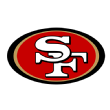 31. San Francisco 49ersWhat they should do: Trade up. The 49ers have lost a few players this offseason, but this is still one of the deeper rosters in football. GM John Lynch also has two extra fourth-rounders and an extra sixth-rounder to play around with if he wants to make a small move up the board. After what went down in the Super Bowl, trying to jump ahead of the pack for a cornerback could make sense, although that's not a position this regime has typically valued at a high level in the draft.
 32. Kansas City ChiefsWhat they should do: Trade up. Left tackle is a major question mark for the Chiefs with Donovan Smith still a free agent. They could bring him back, but coach Andy Reid needs a long-term solution on the blind side, something Kansas City has lacked since it moved on from Eric Fisher three years ago. The rest of the offensive line is about to get more expensive with center Creed Humphrey and guard Trey Smith eligible for extensions, so finding a low-cost option to protect Patrick Mahomes would make sense. Wanya Morris, a third-round pick last year, didn't look great in his audition for the role last season, so this could be an opportunity for GM Brett Veach to move up. The Chiefs probably won't want to move for someone who's more of a project like Mims unless they also plan on bringing back a veteran to play ahead of him in 2024; a smaller move to draft a tackle such as Morgan or Tyler Guyton (Oklahoma) would make more sense.
|

